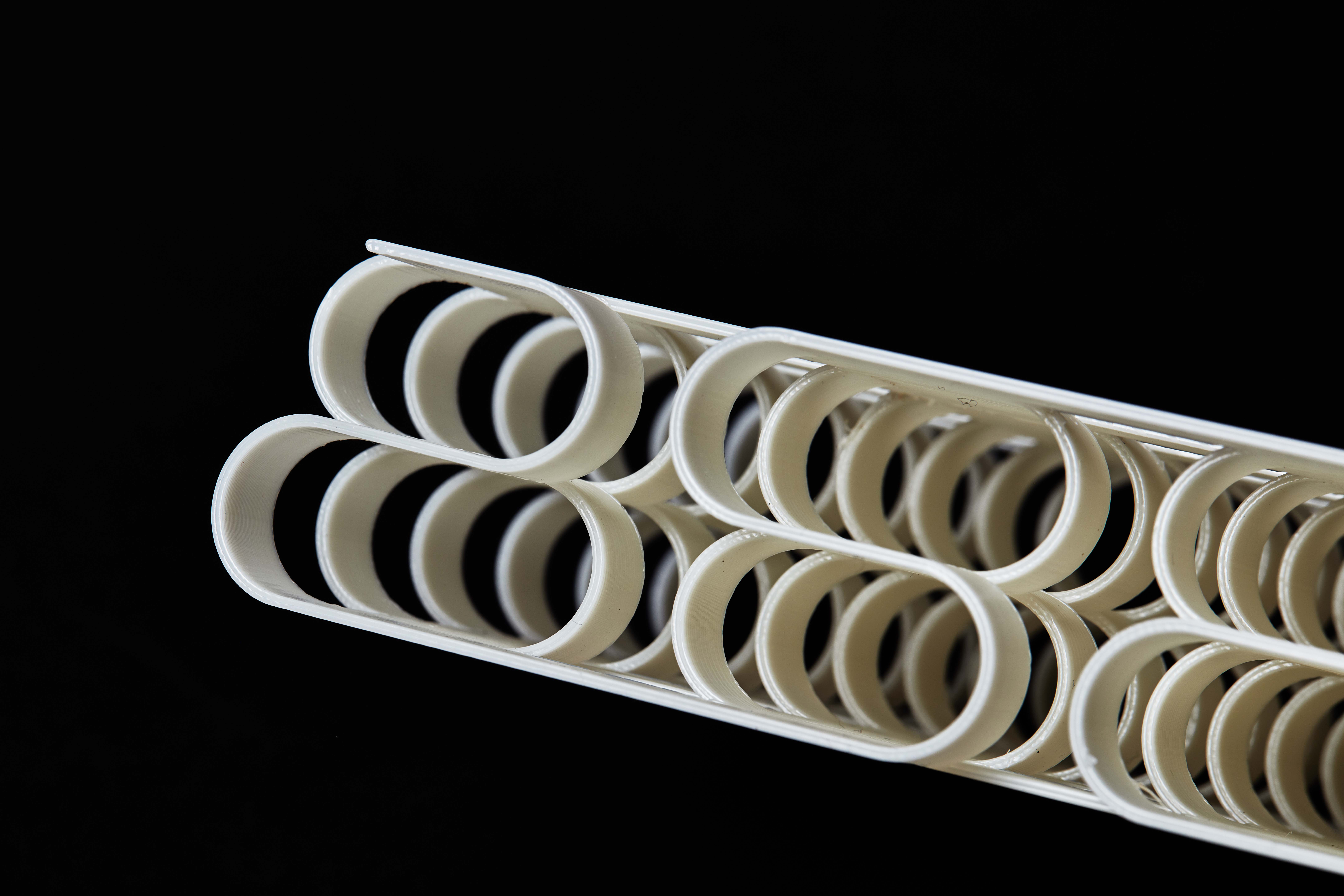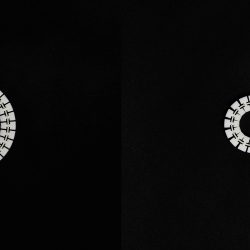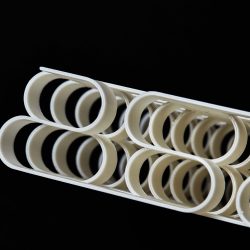compliance
Description
"compliance" is a research project in the field of flexible, one-piece mechanisms and provides evidence that the task of the traditionally constructed mechanism can be replaced by a flexible and resilient/resistant structure — a compliant mechanism. The designed and manufactured objects were constructed from a monolithic and continuous geometry.What is the Topic?
Mechanisms that gain some or all of their motion through the deflection of their flexible members are classified as compliant mechanisms. This subcategory of mechanisms dispenses with the traditional joint concept, while relying on material control and reversible deflection. Accordingly, the key component of these mechanisms is their geometry. This leads to a dependency of form and function. The design of the form of the compliant mechanism alone determines the nature and quality of its function. Decisive for the behavior of these forms is their geometric configuration. A continuous monolithic geometry results from the omission of joints and rigid connections.
Why does it look like this?
The compliant mechanisms consist of a coherent monolithic geometry, which is made in one piece. Thus, these mechanisms are equipped with a mono-material property. These mechanisms are defined by their geometry; however, the most important and decisive characteristic is flexibility. They depend on the elastic deformation or bending of flexible members in order to perform their function. Conventional mechanisms distribute the task to bear load and to generate motion to separate components. In compliant mechanisms, both load-bearing and motion- generation, are realized by one continuous flexible geometry. Compliant mechanisms are able to transform an input force into an output motion.
What is special?
In the constructed mechanisms, different functions are integrated into only one element, leading to the reduction of components. "compliant mechanism" offer the possibility of simplified manufacturing due to component reduction, possible material reduction, and monolithic properties, such as single-mold fabrication or the use of additive manufacturing. These mechanisms offer further significant advantages over conventional mechanisms, such as: no assembly and wear, high precision, lower weight and costs. Another advantage is the ease of miniaturization of their mechanical structure, which enables micro-/nanomechanical systems. Some of the designed mechanisms are manufactured in a compact form, leading to an ideal application for precision-engineering. The monolithic nature of these mechanisms leads to a production that takes place in one place and is realized with one machine or technology. This eliminates a globally distributed production, as well as complex logistics before assembly and the assembly itself. This leads to a reduction of the ecological footprint.
What is new?
Compliance is the key to lighter, quieter, more precise and efficient mechanisms. Constructions built with several components can be replaced by monolithic constructions capable of performing the same functions. Compliant mechanisms present an efficient and economical design. A monolithic geometry emerges by omitting joints and rigid connections. This reduces the number of components to only one, while simultaneously equipping it with a mono-material property. This research project proves, that the common construction of a mechanism and the task to be performed by the traditionally constructed mechanism can be replaced by a flexible and resistant structure — a compliant mechanism.






